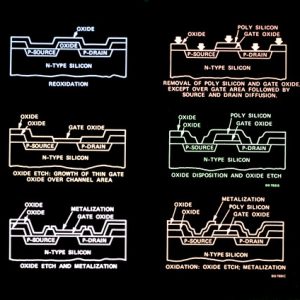Portable Compact DWDM Increases Capacity of Existing Fiber
DWDM increases the capacity of existing fiber, so you can move data faster without installing miles of new fiber. It works by multiplexing multiple wavelength channels into a single optical fiber, so each channel can travel independently.
It is also a future-proof technology that can easily handle future speed protocols, such as 100G and 400G. To maximize the value of your DWDM system, look for compact self-tuning modules.
Compact Size
DWDM has become the most popular wavelength control technology for optical networks. It can support Portable Compact DWDM up to 80 simultaneous wavelength channels, which are only 0.8nm apart from each other. It is a very efficient way to transmit data over long distances. It can also handle higher speed protocols such as 10 Gigabit Ethernet and 16G Fibre Channel. It is the most cost-effective option for expanding network bandwidth capacity.
OptiWorks ultra-compact compact DWDM (CDWDM) modules are less than one-third the size of traditional cascaded CWDM devices. They utilize thin film filter technology to achieve low insertion loss and excellent temperature stability. The modules are available in a wide variety of ITU channel configurations and meet Telcordia GR-1209-CORE and GR-1221-CORE requirements.
The compact DWDM device is an integrated optical component that combines or separates multiple wavelength signals into single fiber or multiple fibers. The CDWDM has a high channel isolation to prevent the signal from being distorted during transmission. It also has a lower insertion loss than other wave division multiplexers, which can reduce the power requirement for signal transmitters.
The compact DWDM device is suitable for a wide range of applications, including NG-PON2 ONUs. It has a low insertion loss and is designed for use in harsh environments. The device uses a non-glue manufacturing process and can work in temperatures from -40 to +85 degrees Celsius. Its small package size saves space and makes it easy to install.
Tunable
DWDM allows multiple optical signals to be transmitted over a single fiber optic cable by assigning each signal its own unique wavelength. This increases the capacity of a network by creating virtual fibers that carry data at different speeds without interfering with each other. It is a vital technology for carrier transport networks, especially those used for metro aggregation or to bring computing capabilities closer to end users.
Until recently, two obstacles prevented the wide deployment of DWDM: lack of tunable transceivers and cost. Tunable DWDM modules have solved both problems by enabling the use of existing fiber infrastructure and reducing costs. These small form-factor pluggable (SFP) transceivers are capable of tuning to multiple wavelengths within the DWDM spectrum, making them ideal for connecting devices in active DWDM networks.
In addition, tunable SFPs can be used in multi-mode optical fiber (MPO) and single-mode optical fiber (SMF) applications and offer up to 80km link distances over SMF. They also feature LC duplex connectors and digital diagnostic functions to support easy installation, maintenance and troubleshooting. They are compliant with SFF-8431, SFF-8432, SFF-8690 and ITU-T G.698.1 standards and are hot-swap compatible. This allows for a quick and easy replacement of existing 300 pin transponders in coherent line cards. This reduces time to market for new services and simplifies upgrade choices.
Self-Tuning
DWDM enables providers to make the most of existing fiber, increasing data capacity Network Server without having to lay down additional miles of new cable. It also helps maintain data integrity by splitting up data streams or channels across different wavelengths on the same fiber, allowing security-related partitioning or the separation of multiple tenants in a single network, for example.
However, upgrading to DWDM isn’t without challenges, especially in the field. Traditionally, tunable transceivers required field technicians to manually verify the wavelength channel record and connect to the correct filter port. This was time-consuming, labor-intensive, and prone to human error.
Fortunately, advancements in electronic and photonic integration have helped to eliminate this limitation. Today, tunable modules are compact, and most support a range of wavelengths to accommodate various applications. For instance, narrow-band modules work well for mobile fronthaul, while full-band DWDM is ideal for expanding fixed networks.
This increased capability and affordability makes it possible for MSOs to deploy DWDM nodes in their cable infrastructure. But installing and maintaining these nodes is still a time-consuming process, and the number of hours spent on this upgrade can quickly turn into expensive costs. This is why it’s important for providers to choose a self-tuning module that reduces the need for costly tuning equipment. ProLabs’ Clarity, for example, is an intelligent, plug-and-play, wavelength self-tuning DWDM that makes it easy for field technicians to manage DWDM links without the need for manual intervention.
Flexibility
DWDM technology enables the transmission of multiple channels on a single fiber optic cable, thereby increasing bandwidth capacity significantly. The ability to support a wide range of data formats and protocols makes DWDM the ideal choice for high-speed data transmission over long distances. The latest tunable DWDM SFP transceiver technologies from EFFECT Photonics further enhance this capability by providing flexibility and scalability to meet the needs of evolving network environments.
Tunable DWDM offers a number of benefits to metro and access networks. For one, it reduces costs by allowing you to upgrade from CWDM without having to replace all of the amplifiers in your network. It also increases flexibility by enabling you to add or remove wavelengths on the fly. Moreover, it can accommodate higher channel counts and longer wavelengths than traditional fixed DWDM.
Fixed DWDM systems require that you stock spares for every channel your network requires. This can be costly and time-consuming. In contrast, tunable DWDM lets you adjust the wavelengths in your network as needed, saving you money on expensive spares and improving operational efficiency.



